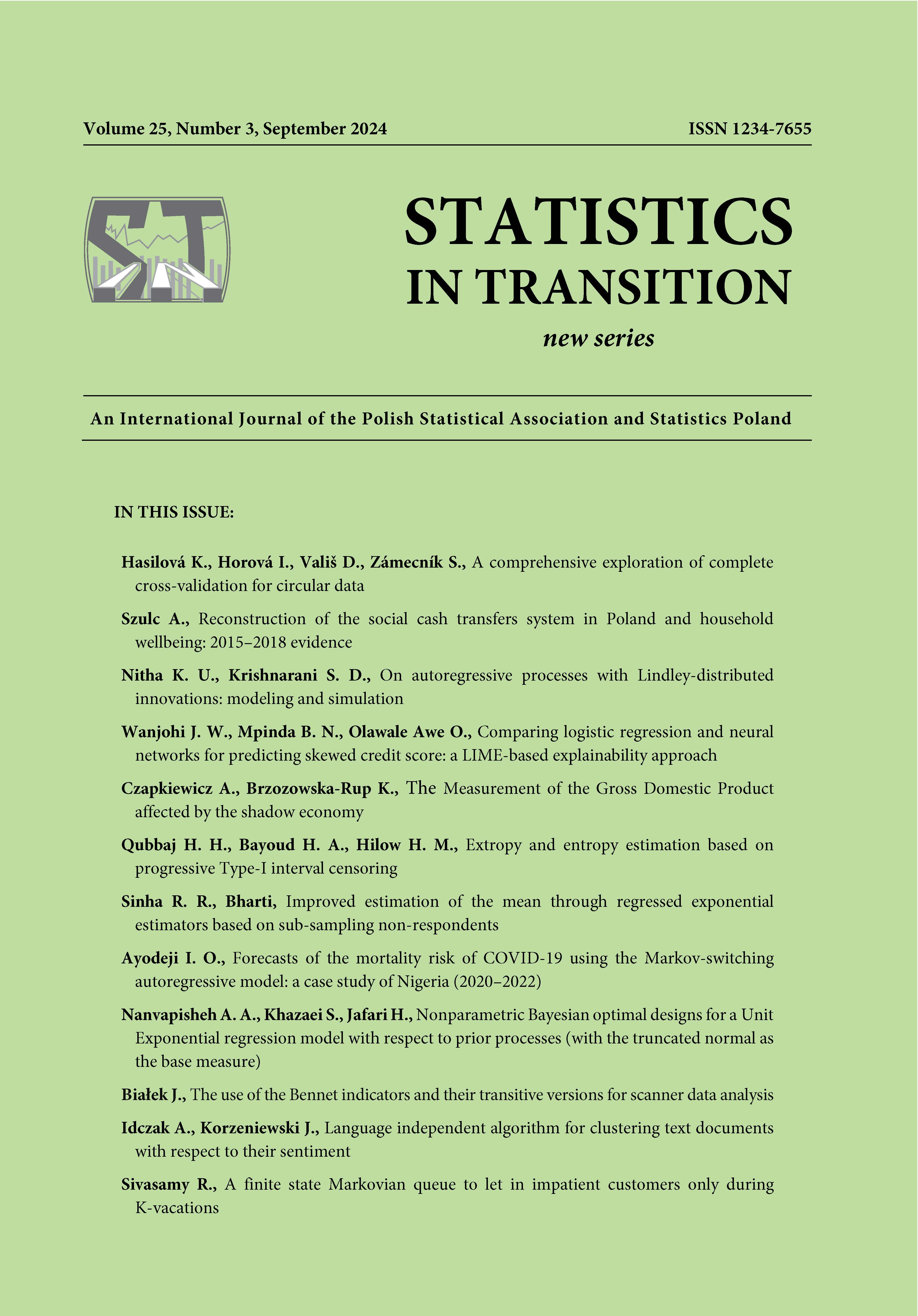ARTICLE
ABSTRACT
We investigate a matrix analysis study for a single-server Markovian queue with finite capacity, i.e. an M/M/1/N queue, where the single server can go for a maximum, i.e. a K number of consecutive vacation periods. During these vacation periods of the server, every customer becomes impatient and leaves the queues. If the server detects that the system is idle during service startup, the server rests. If the vacation server finds a customer after the vacation ends, the server immediately returns to serve the customer. Otherwise, the server takes consecutive vacations until the server takes a maximum number of vacation periods, e.g. K, after which the server is idle and waits to serve the next arrival. During vacation, customers often lose patience and opt for scheduled deadlines independently. If the customer’s service is not terminated before the customer’s timer expires, the customer is removed from the queue and will not return. Matrix analysis provides a computational form for a balanced queue length distribution and several other performance metrics. We design a ‘no-loss; no-profit cost model’ to determine the appropriate value for the maximum value of K consecutive vacation periods and provide a solution with a numerical illustration.
KEYWORDS
impatient customers, vacation period, queue length, stationary distribution
REFERENCES
Ammar, S., (2015). Transient analysis of an M/M/1 queue with impatient behavior and multiple vacations. Applied Mathematics and Computation, 260, doi: 10.1016/j.amc.2015.03.066, pp. 97–105.
Kharoufeh, J. P., (2011). Level-Dependent Quasi-Birth-and-Death Processes, doi: 10.1002/9780470400531.eorms0460: Wiley Encyclopedia of Operations Research and Management Science.
Latouche, G. A., Ramaswami, V., (1999). Introduction to Matrix Analytic Methods in Stochastic Modeling. Pennsylvania: Society for Industrial and Applied Mathematics, Philadelphia.
Neuts, M., (1981). Matrix geometric solutions in stochastic models—an algorithmic approach, Baltimore: John Hopkins University Press.
Sivasamy, R., (2020). Two Server Poisson Queues with a Slow Service Provider for Impatient Customers. International Journal of Mathematics and Statistics, 2, ISSN 0974–7117 (Print); ISSN 0973-8347 (Online), https://www.ej-math.org, pp. 57–73.
Sivasamy, R., Thillaigovindan, N., Paulraj, G. A., and Parnjothi, N., (2019). Quasi birth-death processes of two-server queues with stalling. OPSEARCH, 56, https://doi.org/ 10.1007/s12597-019-00376-1, pp. 739–756.
Sudhesh, R., Azhagappan, A., (2019). Transient solution of an M/M/? queue with system’s additional tasks and impatient customers. Int. J. of Mathematics in Operational Research, 16, No. 1, https://dblp.org/db/journals/ijmor/index, pp. 82–97.
Zhang, Y., Yue, D. A., and Yue, W., (2005). Analysis of an M/M/1/N queue with Balking, Reneging and Server Vacations. International Symposium on OR and Its Applications, 1, https://www.scirp.org/(S(351jmbntvnsjt1aadkposzje)), pp. 37–67.
